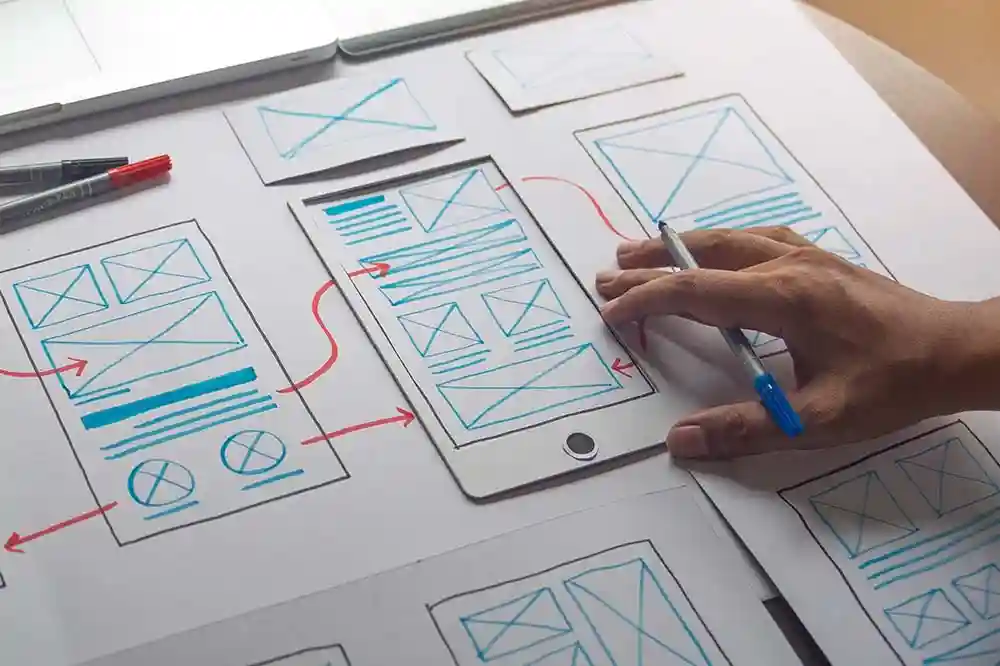Prototyping is the process of creating a preliminary version of a product or interface to visualize and test its design and functionality. In UX design, prototypes serve as a tangible representation of the final product, allowing designers to gather feedback from users, stakeholders, and team members.
Prototyping helps in identifying usability issues, refining interactions, and validating design decisions early in the development process.
Importance of Prototyping in UX Design
Prototyping is a critical step in the UX design process for several reasons:
- Visualization: Prototypes provide a visual representation of the final product, helping stakeholders and team members better understand the design concept.
- Iterative Design: Prototyping allows designers to quickly iterate on different design ideas and test multiple solutions to a problem.
- User Feedback: Prototypes enable designers to gather valuable feedback from users early in the process, ensuring the design aligns with user needs and expectations.
- Error Identification: By testing a prototype, designers can identify potential usability issues before investing time and resources into full-scale development.
- Collaboration: Prototypes act as a communication tool, facilitating collaboration between designers, developers, and stakeholders by providing a clear and interactive depiction of the design vision.
- Cost Efficiency: Addressing design flaws during the prototyping phase is significantly less expensive than making corrections during or after development.
Types of Prototypes
Prototypes vary in complexity and fidelity, depending on the project’s goals and stage in the design process. Common types include:
- Low-Fidelity Prototypes: Often sketches or wireframes, these are quick and inexpensive ways to test early ideas and gather initial feedback.
- High-Fidelity Prototypes: These closely resemble the final product in design and functionality, providing a realistic experience for usability testing.
- Interactive Prototypes: These allow users to interact with the design, simulating real-world usage and helping to evaluate user flows and interactions.
- Paper Prototypes: Hand-drawn representations of a design used for early brainstorming and testing basic concepts.
Tools for Prototyping
Modern UX design relies on a variety of tools to create effective prototypes. Popular tools include:
- Figma: A collaborative design tool that supports high-fidelity prototyping and team collaboration.
- Adobe XD: A versatile tool for creating interactive prototypes and user flows.
- Sketch: A design software often used for wireframing and high-fidelity prototyping.
- InVision: Specialised in interactive prototyping, ideal for presenting designs to stakeholders.
- Axure: A powerful tool for creating detailed, functional prototypes with advanced interactions.
Best Practices for Prototyping
Effective prototyping is key to refining UX designs and ensuring a seamless user experience. Following best practices can help designers maximize the potential of prototypes, streamline the design process, and deliver exceptional results. Here are some essential guidelines to keep in mind:
- Start Simple: Begin with low-fidelity prototypes to focus on core functionalities and overall user flow.
- Test Early and Often: Conduct user testing at multiple stages to refine the design incrementally.
- Be Open to Feedback: Encourage honest feedback from users and stakeholders to identify areas for improvement.
- Focus on Key Features: Highlight the most critical aspects of the design that align with user goals and project objectives.
- Iterate Continuously: Use insights from testing to iterate and enhance the prototype until it meets the desired standards.
Conclusion
Prototyping is an indispensable part of the UX design process, bridging the gap between concept and reality. By enabling designers to visualize ideas, gather feedback, and refine solutions, prototypes help create user-centered designs that are functional and efficient.
Embracing best practices and leveraging the right tools can significantly enhance the design process, ultimately delivering exceptional user experiences.
Key Takeaways:
- Prototyping is essential in UX design for visualizing, testing, and refining design concepts.
- Starting with low-fidelity prototypes and setting clear goals are key to effective prototyping.
For further deepening your knowledge and skills in UX design, consider enrolling in the Parsons UX Design Foundations online course and certificate program offered by Yellowbrick.
This comprehensive program will provide you with valuable insights and practical experience to excel in the field of UX design.




